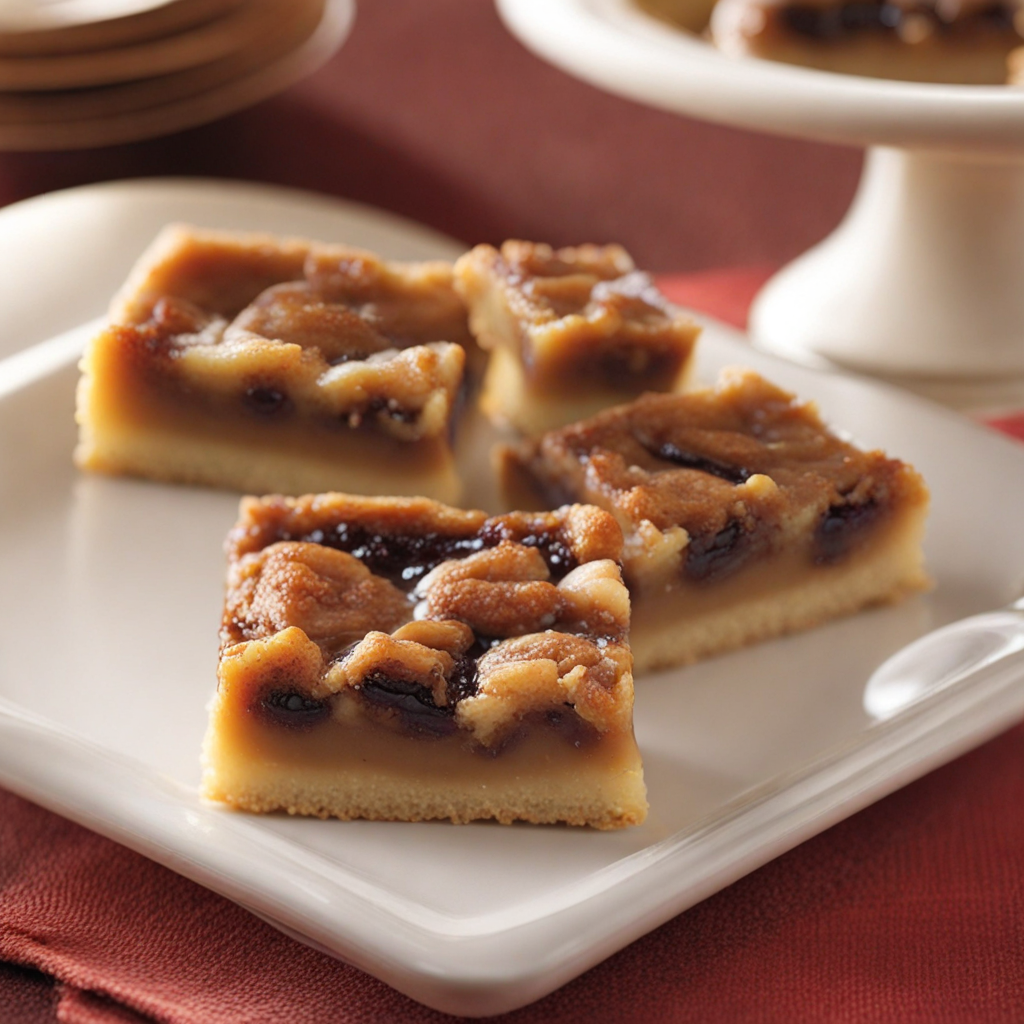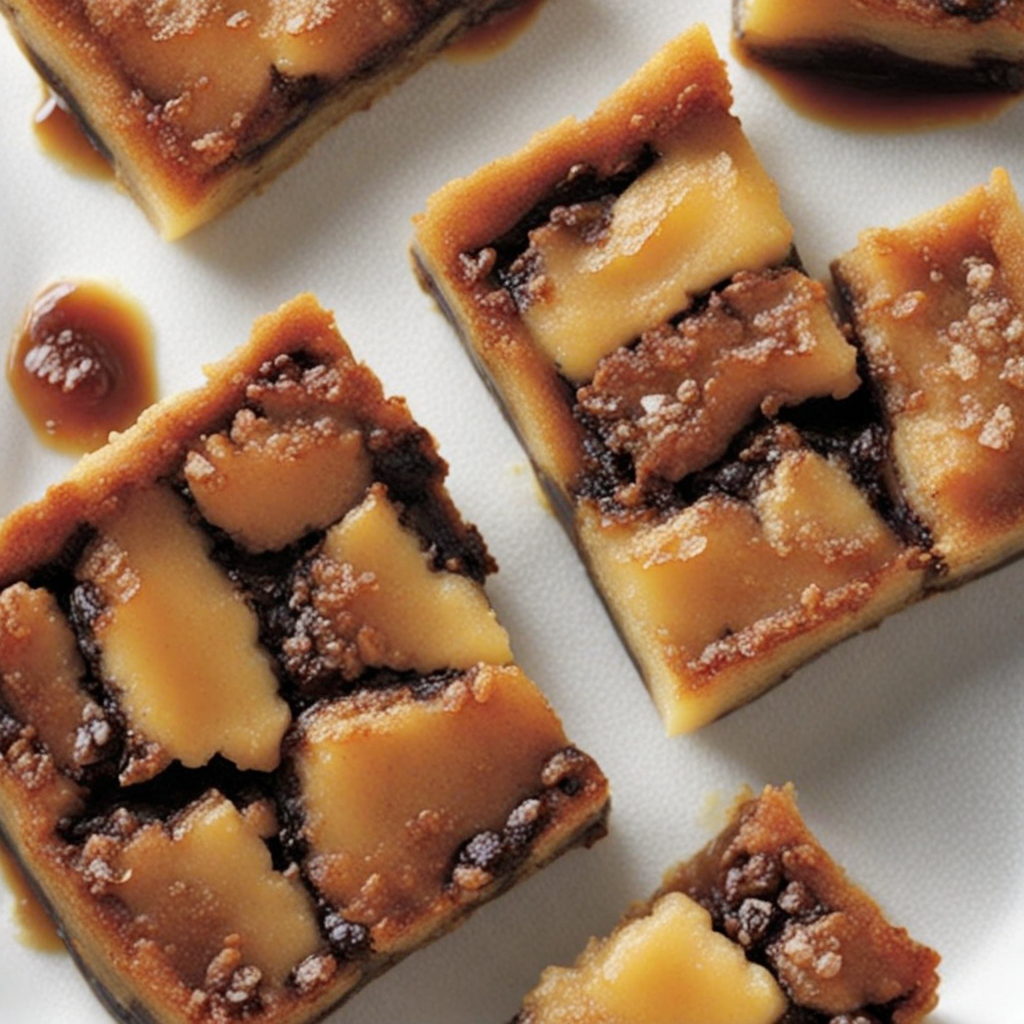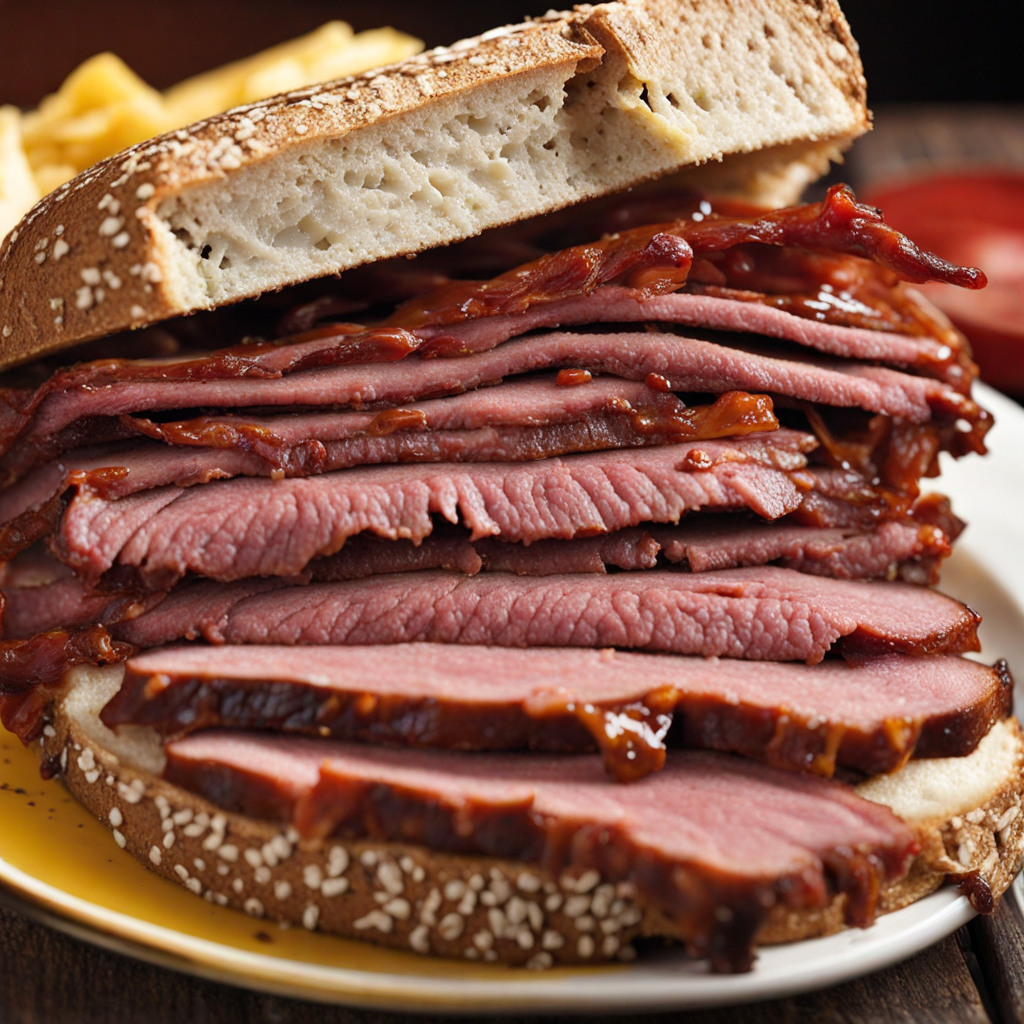Butter Tart Squares
Butter Tart Squares are a delightful Canadian dessert that encapsulates the rich and sweet essence of traditional butter tarts, but in a convenient bar form. The base is made from a buttery and crumbly shortbread crust that provides a perfect contrast to the gooey filling on top. This crust is usually enriched with just the right amount of sugar, giving it a melt-in-your-mouth quality that pairs beautifully with the sweet filling. The combination of textures between the crisp crust and the soft, sticky center makes each bite an indulgent experience. At the heart of these squares lies the filling, which is a luscious blend of butter, brown sugar, and eggs. This mixture is cooked until it reaches a velvety consistency that's both sweet and slightly caramel-like in flavor. Many variations of butter tart squares include add-ins like raisins, pecans, or walnuts, which add depth and a bit of crunch, enhancing the overall flavor profile. The sweetness is balanced by a hint of salt, which elevates the taste and prevents it from becoming overly sugary. Butter Tart Squares are often enjoyed at gatherings, special occasions, or as a cozy treat with a cup of coffee or tea. They are easy to make and can be cut into small squares, making them perfect for sharing. This dessert offers a taste of Canadian heritage while inviting anyone who tries it to experience a uniquely comforting and satisfying treat that captures the essence of home baking. Once you take a bite, you’ll find it hard to resist going back for another square!
How It Became This Dish
The Sweet Legacy of Carrés Tarte au Beurre: A Culinary Journey Through Canadian History Origin and Early Influences Carrés tarte au beurre, or butter tart squares, are a delightful dessert that epitomizes the rich culinary heritage of Canada, particularly within the province of Ontario. The roots of this sweet treat can be traced back to early French settlers in the region, who brought with them the culinary traditions of France. The settlers, primarily in the 17th and 18th centuries, were influenced by the abundant resources of the New World, which allowed them to adapt their recipes using local ingredients. The butter tart, from which the squares derive, is believed to have emerged in the 19th century, with its first recorded recipe appearing in the 1900s. However, similar custard-based tarts can be traced back to English recipes dating from the 18th century. It is noteworthy that the combination of butter, sugar, and eggs in a tart shell was a common practice among various European cultures, making the butter tart a delicious amalgamation of influences. Cultural Significance Carrés tarte au beurre holds a special place in Canadian culture, symbolizing comfort and homeliness. It is often associated with family gatherings, holidays, and potluck events, where its presence is a testament to shared culinary traditions. The dessert is especially popular in Ontario, where it appears at farmers' markets, bakeries, and local diners, reinforcing its status as a quintessential Canadian treat. The popularity of the butter tart, and by extension the butter tart square, also speaks to the broader theme of Canadian identity. The tart has become a symbol of the country’s pioneering spirit and resourcefulness, as it showcases the ability to create something delicious from simple, readily available ingredients. In recent years, the butter tart has garnered national attention, even being celebrated in festivals and competitions, further solidifying its role in Canadian culinary culture. Development Over Time As with many culinary traditions, the recipe for carrés tarte au beurre has evolved over time. Initially, the butter tart was made using a flaky pastry crust, filled with a mixture of butter, brown sugar, and eggs. The filling was simple, allowing the rich flavors of butter and sugar to shine through. However, as culinary creativity flourished in the 20th century, variations began to emerge, introducing new ingredients and flavor profiles. The transition from the traditional butter tart to the square format can be attributed to several factors. First, the square format offers convenience. It is easier to cut and serve, making it a popular choice for gatherings and events. Additionally, the square format allows for variations in texture and presentation. Many bakers have taken the liberty to experiment with the original filling, incorporating ingredients such as nuts, chocolate, or even fruit, adding layers of flavor and texture to the dish. In the 1970s and 1980s, the rise of home baking and the proliferation of cookbooks in Canada contributed to the popularization of butter tart squares. Recipes began to circulate widely, and with the advent of the internet, home bakers could share their unique takes on the dessert. Social media has played an instrumental role in revitalizing interest in traditional Canadian desserts, with food bloggers and influencers showcasing their own versions of carrés tarte au beurre, often with stunning photography that captures the eye. Modern Interpretations Today, the carrés tarte au beurre can be found in a myriad of forms across Canada and beyond. Bakers have embraced the versatility of the dessert, crafting everything from gluten-free versions to those infused with exotic flavors such as matcha or chai spices. The base crust has also seen variations, with some opting for a graham cracker crust or even a shortbread base, catering to diverse dietary preferences and tastes. In gourmet bakeries, you might find carrés tarte au beurre topped with a delicate layer of sea salt or drizzled with caramel, elevating the humble square to a sophisticated dessert that appeals to modern palates. The dessert has also made its way into fusion cuisine, where chefs experiment with international flavors, incorporating elements from Asian or Latin American desserts, resulting in innovative takes on the classic. Conclusion: A Sweet Symbol of Togetherness Carrés tarte au beurre represents more than just a delicious dessert; it embodies the history, culture, and evolution of Canadian culinary traditions. As it has adapted over time, the dessert has continued to foster connections among people, bringing friends and families together around the table. In a rapidly changing world, where culinary traditions can sometimes feel overshadowed by global influences, carrés tarte au beurre stands as a testament to the enduring nature of local food heritage. It invites us to savor not just its sweet, buttery flavor, but also the stories and memories it conjures—of family kitchens, holiday feasts, and the simple joy of sharing homemade treats. As Canadians continue to embrace their culinary roots while exploring new horizons, carrés tarte au beurre will undoubtedly remain a beloved staple in the hearts and homes of many, a sweet reminder of the country’s rich culinary tapestry that binds past and present in one delicious bite.
You may like
Discover local flavors from Canada







